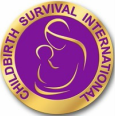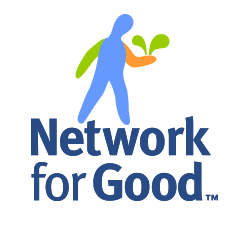 Today is International Day of the Girl Child, recognized by the United Nations each year to highlight the strides needed to advance the status of girls and women worldwide. As girls become wives, mothers, teachers, and business owners, they inextricably open the door for their families, students, and communities to progress as well. Girls’ Progress = Goals’ Progress and this year’s International Day of the Girl theme, points to just that fact. This year, the theme calls for more girl-centered research. The progress is being measured according to the United Nations’ 2030 Sustainable Development Goals (SDGs) — goals that call for ending poverty, increasing access to clean water and improving sanitation, lowering maternal and infant mortality rates, and achieving gender equality worldwide, among 13 other outlined goals. Having girls and women join the workforce and contribute to their family’s overall income helps reduce the poverty many face by adding additional income to the household for use towards necessities. Increasing access to clean water and bettering sanitation can greatly reduce the amount of time women and girls use to travel to obtain water and cut down on the exposure to often handicapping or deadly (but preventable) illnesses like cholera that can affect not only the water-bearer, but the entire family. Lack of access to quality prenatal care and health services, and shortage of qualified health care workers and the appropriate equipment contribute to many preventable maternal and infant deaths. Achieving gender equality can help tackle all of the above. This year, International Day of the Girl shines light on the damaging effects of child marriage. Marriage prior to the age of 18 disproportionately subjects girls to early motherhood (family planning methods are often not discussed, readily available, and/or endorsed by their spouses), early death (due to pregnancy-related illness, death during/after childbirth, and even domestic abuse), poverty (due to growing families), and of equal importance, ends the progression of formal education. As wives and mothers, the focus shifts from education and girlhood to tending to the home: cleaning, childbearing, water collection, and food preparation. The dreams and goals of girls entering into marriage go unpursued. The UN reports that 1 in 3 girls in most developing countries (with the exception of China) are married before the age of 18. This equates to roughly 48,000 girls entering into marriage unions per day. Recognizing that girls and women possess the same potential as boys and men to contribute to their homes and to their communities, and that the act of child marriage impinges upon the human rights of girls everywhere, there is a huge push to end child marriage. How, you ask? Empowering girls through education about their rights and of course, formal education, helps challenge the status quo of early marriage. The passing of legislation to end child marriage also helps with discouraging child unions. Fully examining the data on girls and the progress made with such efforts to end child marriage offers a great indication on how we are progressing towards achieving the SDGs, and of course, to assuring that girls everywhere are leading better, fuller lives. The Childbirth Survival International program #GirlTalkGirlPower empowers girls, advocates for their secondary and tertiary education, and improves conditions that threaten the health of girls in Africa. Today, on International Day of the Girl, we encourage you to join the fight to #LetGirlsLearn! By Kimberly Sarvis, CSI Grant Writer
0 Comments
 My first child was born via emergency c-section, because he was losing oxygen and I was hemorrhaging at a rate that would require a blood transfusion had we not decided to act immediately. My son and I survived childbirth with no further complications and luckily no ill after effects other than the soreness and struggles that follow any major surgery. I am grateful for that and for the safety net of a c-section. I was lucky because I was informed, had access to quality health services, doctors, and a strong support system. Many pregnant women especially in developing countries aren’t so lucky. They have no or few choices, and they have no medical safety nets. For instance, many women in Tanzania receive no prenatal care and give birth without basic medical necessities, like gloves, scalpels, umbilical clamps, sterile medical equipment, and life-saving drugs in case of hemorrhaging. Each year, 303,000 women die from complications during pregnancy, childbirth, and immediately after giving birth but these deaths are preventable and some causes could have been managed and treated to save the life of a pregnant woman. Skilled birth attendants do the best they can with what little they have, but they need more and Childbirth Survival International community-based interventions contribute to closing gaps in maternal-newborn service delivery. Under CSI's Saving Lives at Birth program in Tanzania and Uganda, CSI provides sterile childbirth kits (mama kits) to poor women, which also gives midwives the tools they need to provide women with quality healthcare. The childbirth kits contain basic and essential medical supplies and each kit costs $7. In addition to the childbirth kits, CSI donates oxytocin and IV fluids to health facilities essential to save life of Mom and Baby. I am grateful that CSI exists, and I am amazed by what they have accomplished and hope to accomplish in the future. CSI and organizations like it are making a real difference in Tanzania and in other countries around the world by saving lives at birth and empowering and educating the next generation of women. I am proud to be a part of CSI! By Cheryl Harrell, CSI Grant Writer  It’s incredibly inspiring to see the growing global movement to educate, empower, and advocate for the well-being and rights of women and girls gain forceful momentum – it’s about time! It is not an overnight process to change generations of cultural practices and beliefs, but a shift is definitely happening. Conversations are taking place at all levels and among various partners and funders because women and girls are the largest untapped resource in ensuring thriving families, communities, and national economies. When a woman is educated, healthy, informed, and has access to services, opportunities and support, it is not only her gain but the gain of everyone within her network, starting with her family. Everyone gains when women and girls are educated and empowered! Childbirth Survival International (CSI) an international nonprofit based in Baltimore, Maryland is committed to advocate, strengthen, and improve the quality, access, and delivery of health services and information for pregnant women, newborns, children under five years old, and adolescents/youth in underserved communities. With this primary goal, CSI is reaching the unreached in Tanzania and Uganda, and is working to expand in South Africa and Nigeria. CSI’s current portfolio of interventions include: Saving Lives at Birth; Girl Talk, Girl Power; Keeping Youth Healthy Alive & Informed; Men for Women & Girls; and Midwifery Professional Development. CSI focuses on these areas because it is unacceptable that: 830 women die every day due to pregnancy or childbirth related preventable and/or treatable causes; 473,000 children under five years old die each year due to preventable causes – pneumonia, diarrhea, and malaria; 62 million school age girls are not in school due to menstruation and cultural practices; Each year at least 50,000 women’s lives are affected by obstetric fistula; and Every day an estimated 1,000 girls get infected with HIV. ~ Tausi Suedi, MPH Click here to read more. |


 RSS Feed
RSS Feed




